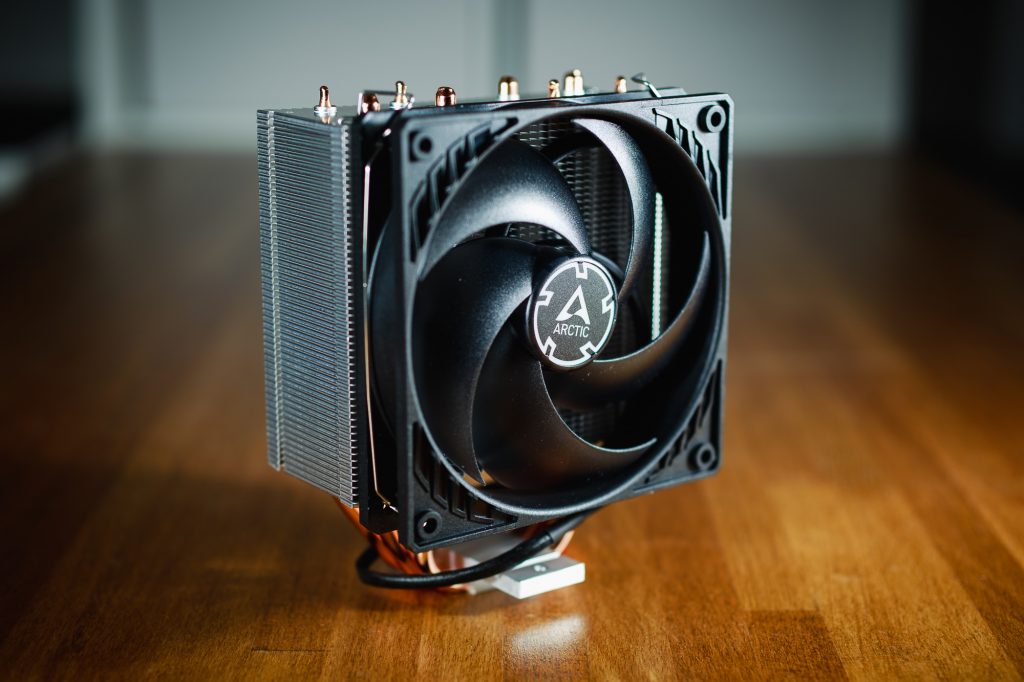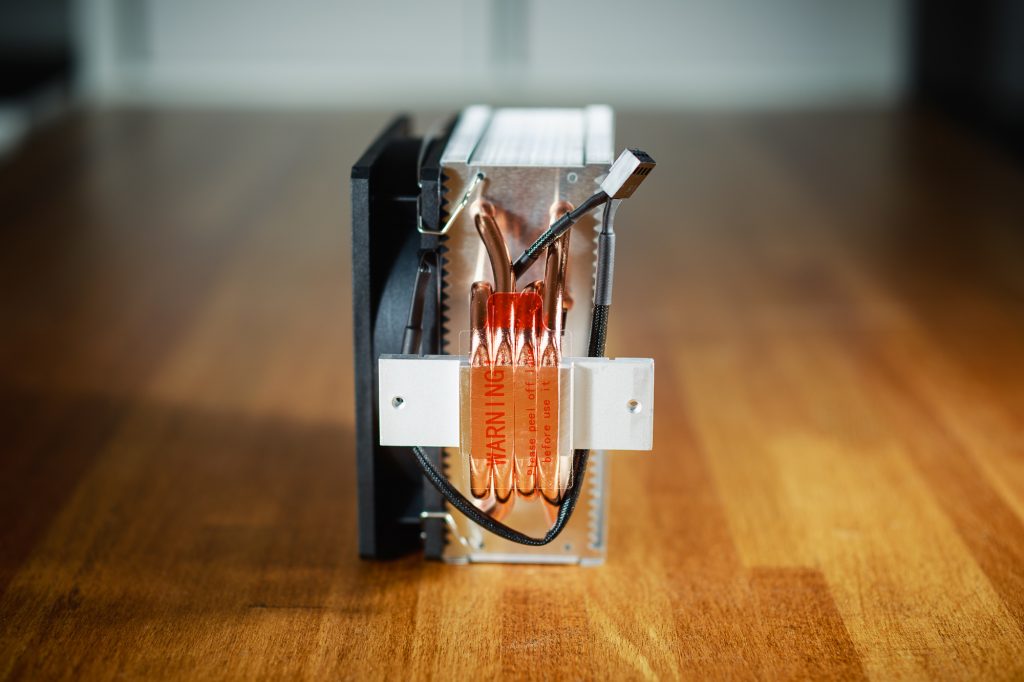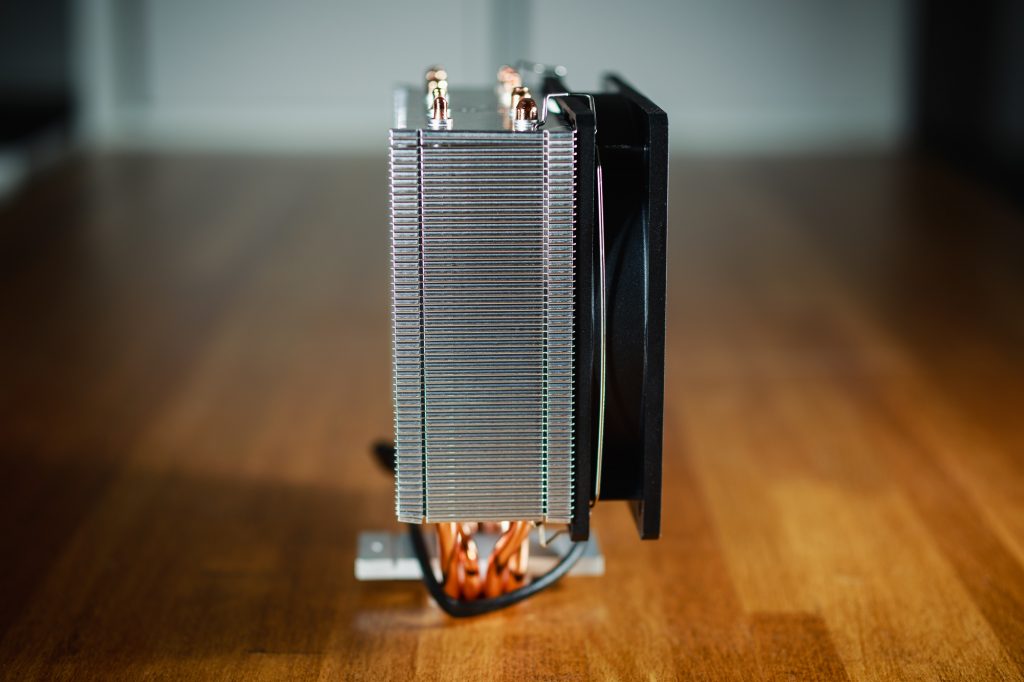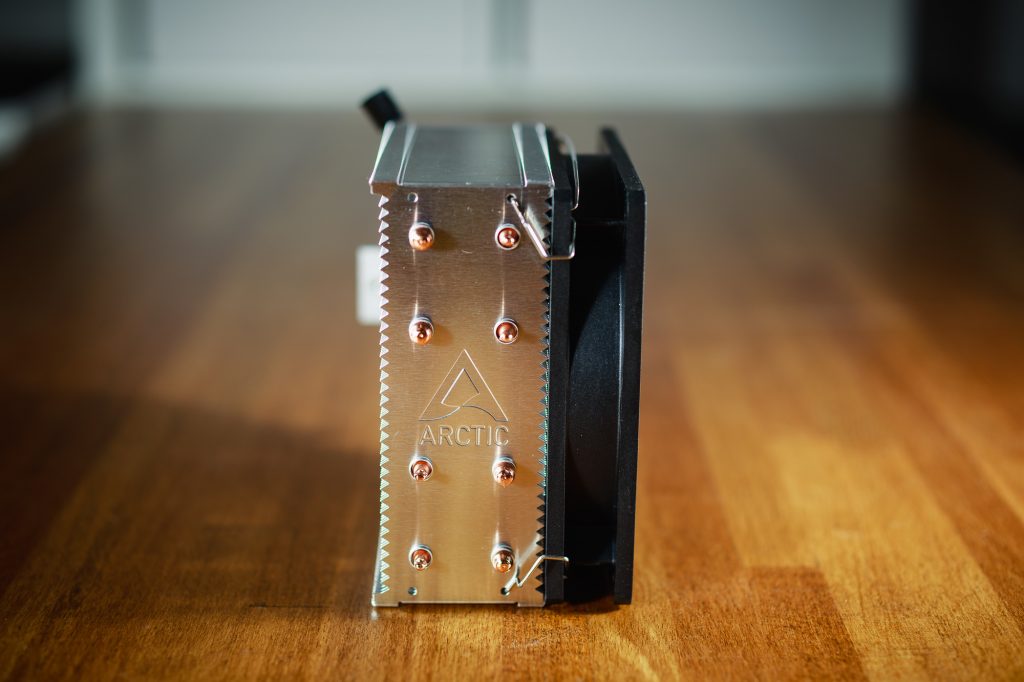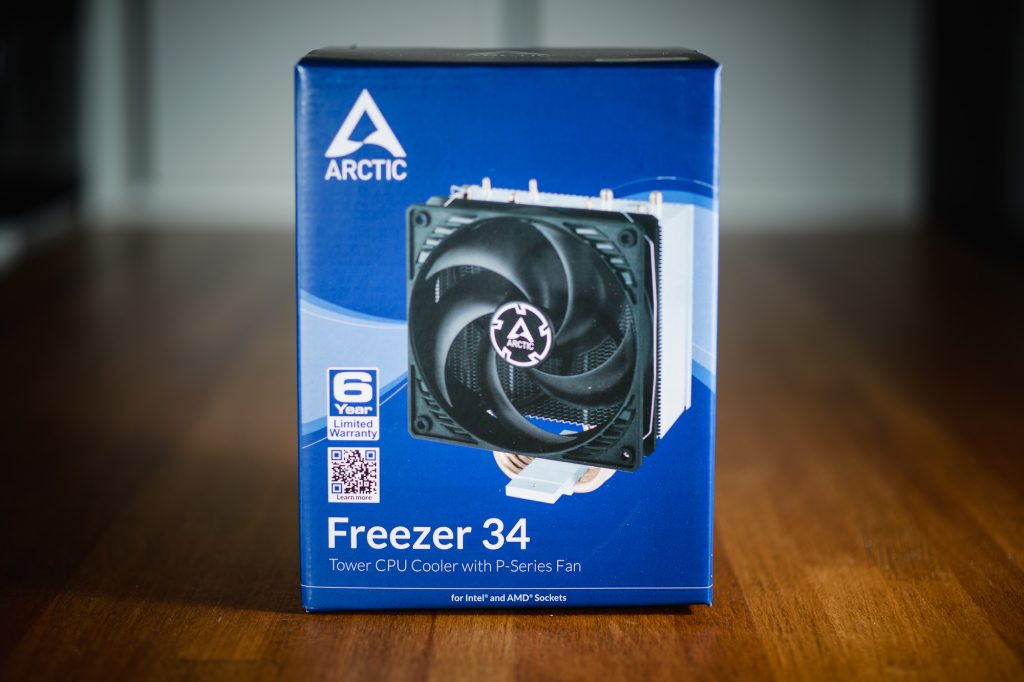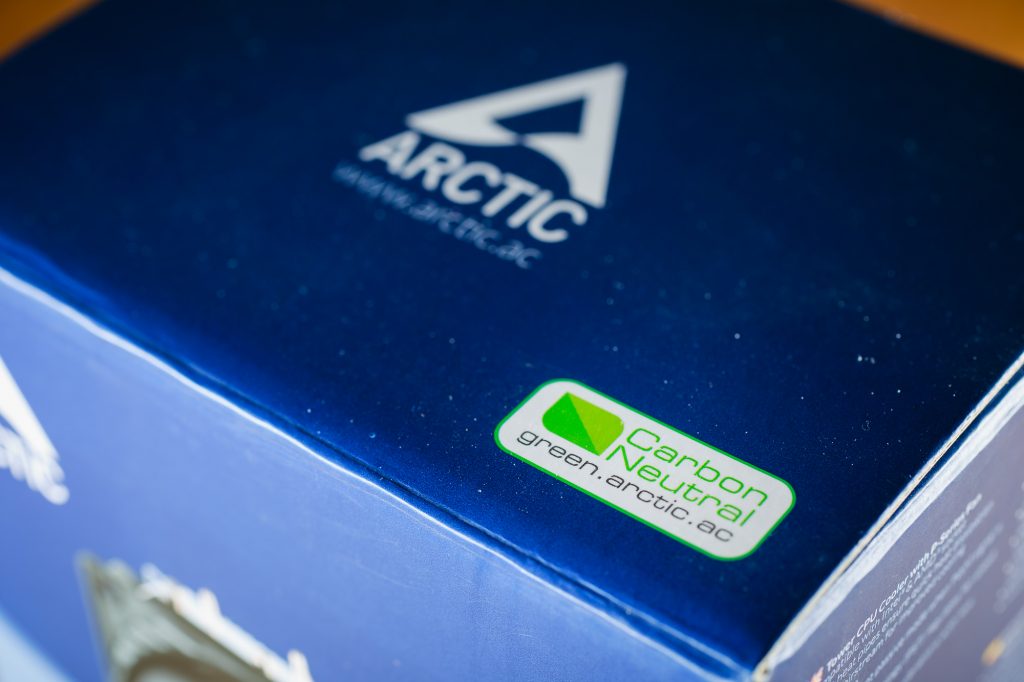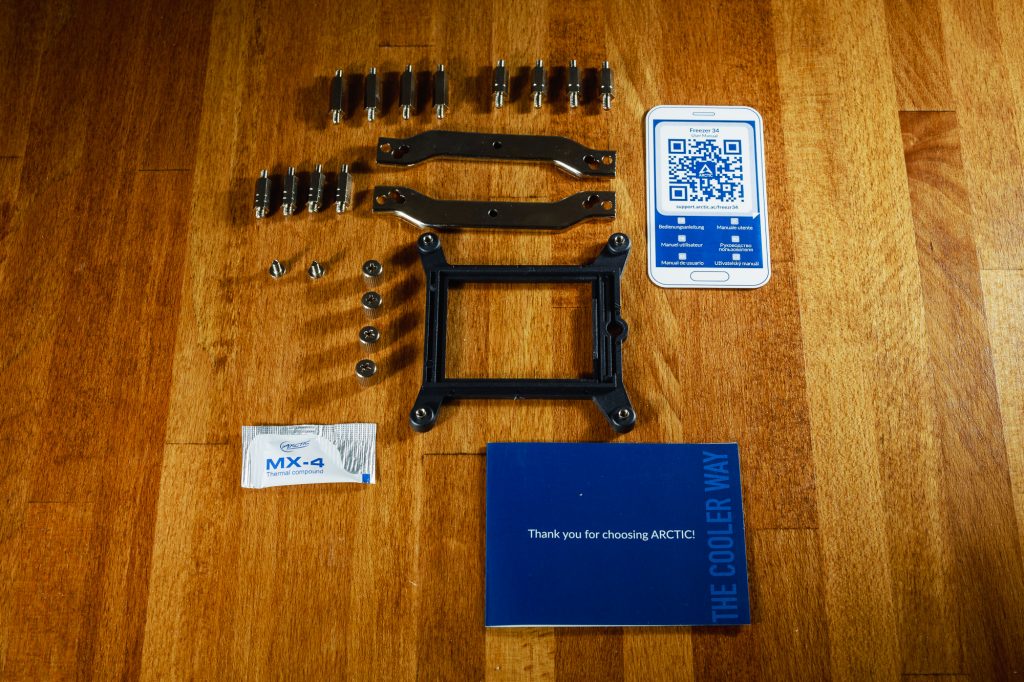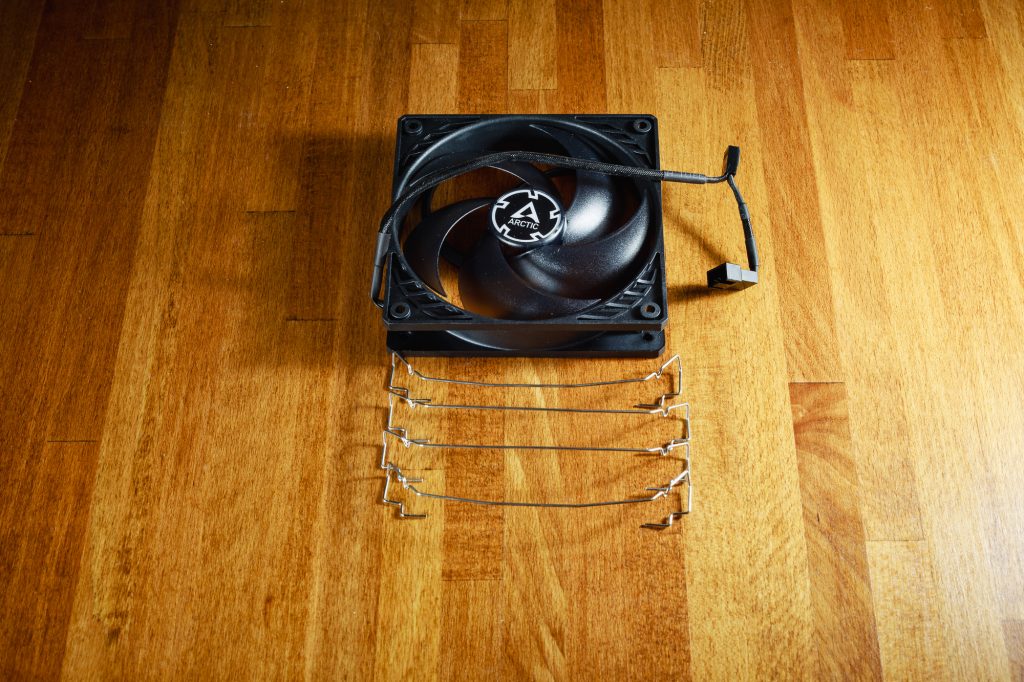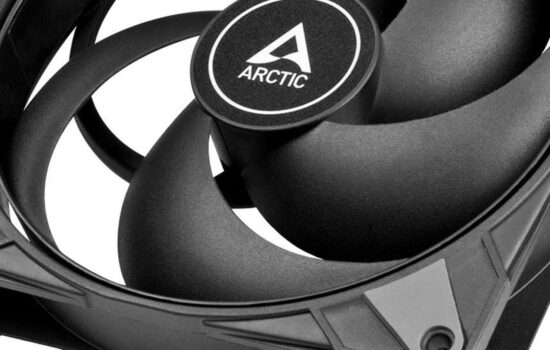Key features
Arctic has long focused primarily on the production of affordable coolers. Freezer 34 should be just one such cooler. At an affordable price, it boasts of a solid TDP rating (150 W) and also promises quiet operation. I’ve had it in my wishlist for a long time, but only now have I managed to get one piece for testing. So I’m wondering if it really lives up to its reputation that precedes it.
Key features of the cooler
Freezer 34 is a classic tower cooler with one 120 mm fan. It doesn’t act anything unnecessarily, it doesn’t have any RGB backlighting and its overall design is purely functional without redundant sugarcoating. Its heatsink has the usual construction of a dense bundle of aluminum fins, of which there are a total of 54. This bundle is connected by four copper heatpipes, which use the principle of direct contact with the processor’s integrated heat spreader (IHS). This should hypothetically ease the transfer of heat from the IHS to the cooler’s body. At first glance, the contact area of the base may seem relatively small, however, Arctic declares that the base is able to completely cover even a multi-core HEDT processor.
The build quality of the cooler is really purely function oriented. The endings of the heatpipes at the top of the fin bundle are not covered in any way and the manufacturer’s logo is subtly embossed into the upper fin of the heatsink. Mounting of the fan is performed by means of clips, which are inserted into small holes through the bundle of fins. Therefore, there is no bending or abrasion of the edges of the fins when installing the fan, but the clips are unfortunately quite soft and easily deformed. Here I would appreciate the use of better quality metal that would hold its shape better.
I was also fascinated by the inconspicuous carbon neutrality label on the packaging of the cooler. You can read more information on the web https://www.arctic.ac/en/about-arctic/green-arctic/, where Arctic, for example, declares that since 2011 it has been a carbon-neutral company that minimizes its CO2 emissions, e.g., by optimizing the package size of its products and providing electronic manuals instead of printed ones. They also contribute to the financing of renewable energy sources in Southeast Asia. Although it has nothing to do with today’s review, I still wanted to share this knowledge, given how ecological topics are now resonating in society.
But back to the contents of the cooler package. You really won’t find a classic printed guide here, only a label with a QR code with a link to a website. On this site you will find animated installation instructions for all supported sockets. I really recommend studying this guide in detail. So that you don’t accidentally make the same mistake as me when I broke the basic IT rule summarized in the acronym RTFM. When installing the cooler, I mounted the mounting frames on the cooler from the wrong side and then wondered why there was no contact between the cooler’s base and the processor. The package also includes a total of four clips for the fans, i.e. a pair for the included fan and a pair for a possible additional fan if you would like to use a push-pull configuration. The photo clearly shows how the clips are already slightly deformed and I only them off the cooler a few times.
Cooler and fan specifications
Freezer 34 is a relatively compact cooler with standard dimensions. It should fit seamlessly in most cases and should not interfere with RAM modules. In addition, it offers a surprisingly long six-year warranty, which is not common for coolers in this price range.
| Cooler | Arctic Freezer 34 | |
| Noctua U12A | ||
| Supported sockets | Podporované patice | Intel 115x, 1200, 20xx; AMD AM4 |
| Height | Výška (bez ventilátoru) | 157 mm |
| Width | Width | 124 mm |
| Depth with fan | 86 mm | |
| Weight | Weight | 605 g |
| Maximum RAM height | unlimited | |
| MSRP | 29 € |
The cooler package includes a P12 PWM PST fan. This fan offers high static pressure and a large rpm range with relatively low noise. It is also equipped with a PST connector, i.e. PWM Sharing Technology. This is a feature where the fan not only has a classic 4-pin connector for PWM control, but also offers a connector for connecting another fan, with which it shares the PWM signal from the motherboard or controller. It is a nice detail that eliminates the purchase of extra splitters. And as a nice bonus, this fan can brag about a ten-year warranty.
| Fan | Arctic P12 PWM PST | |
| Noctua U12A | ||
| Bearing | Fluid Dynamic Bearing | |
| Speed range | Výška (bez ventilátoru) | 200–1800 RPM |
| Maximum airflow | Maximální průtok vzduchu | 95.7 m3/hr |
| Maximum static pressure | Maximální statický tlak | 2.20 mm H2O |
| Noise level | Hlučnost | 23.5 dBA |






